You’ll create custom slicer profiles by first adding your printer configuration with accurate build volume dimensions and correct G-Code flavor settings. Configure filament compatibility by adding inheritance lines to access built-in material options, then establish safe print boundaries with proper parking positions. Optimize print speeds up to 300mm/s with double travel speeds, enable Z-hop during retraction, and customize start/end GCODE sequences for your specific workflow requirements. Master these fundamentals to reveal advanced profile optimization techniques.
Setting Up Printer Specifications and Build Parameters
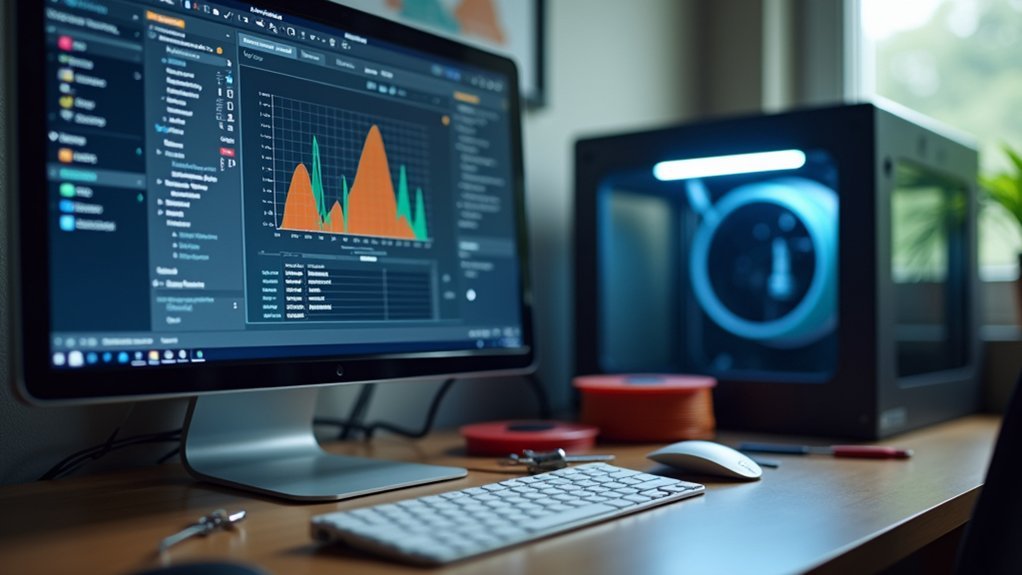
When creating a custom slicer profile, you’ll start by adding a new printer configuration in your slicer software.
Select the appropriate option for your specific printer model, whether it’s manufacturer-specific or custom. Input accurate specifications including build volume dimensions and confirm your build plate’s shape, typically rectangular.
Check if your printer has a heated bed, as this affects print adhesion and material compatibility. Select the correct G-Code flavor, usually Marlin for most printers.
Heated bed compatibility and proper G-Code flavor selection are critical foundations for successful 3D printing configurations.
Adjust gantry height settings ensuring your extruder reaches the entire build volume without obstruction. Finally, specify extruder count, nozzle sizes, and compatible filament diameter.
This foundation enables effective printer profile management and supports custom filament profiles for ideal printing performance.
Configuring Filament Compatibility and Access
When you create custom printer profiles, you’ll quickly discover that accessing built-in filament options isn’t straightforward without proper inheritance configuration.
Third-party printers face particular limitations since most slicers restrict vendor names to generic options, making filament management more challenging.
You’ll need specific workaround solutions to guarantee your custom profiles can access the full range of compatible filaments.
Inheritance Configuration Methods
Although creating custom slicer profiles typically limits your access to built-in filament options, you can work around this limitation by configuring inheritance from existing profiles.
To implement this workaround, you’ll add `inherits = Original Prusa i3 MK3S` to your custom profile’s .ini file, which grants access to the extensive filament library.
This inheritance configuration method offers several benefits:
- Access restoration – Your custom profile regains compatibility with pre-existing filament settings
- Profile flexibility – You can create and manage custom filament profiles while maintaining default options
- Printer compatibility – The inherited settings provide a foundation for various material types
- Simplified workflow – Eliminates the need to recreate existing filament configurations from scratch
While effective, this approach feels somewhat hacky to many users.
Third-Party Printer Limitations
Third-party printer profiles introduce additional complications that extend beyond the inheritance workaround. When you’re using a custom printer profile, you’ll often find that custom filament profiles become invisible or completely unavailable in your slicer’s interface.
This limitation forces you to implement specific workarounds to access your carefully configured filament settings. The most reliable solution involves temporarily switching back to a default printer profile when you need to access your custom filament options.
Once you’ve selected your desired filament profile, you can then switch back to your custom printer configuration. While this process works, it’s admittedly cumbersome and interrupts your workflow.
This visibility issue particularly affects users who’ve invested significant time creating specialized filament profiles for unique materials or specific printing conditions.
Workaround Profile Solutions
Since these compatibility issues can disrupt your printing workflow, you’ll need to implement targeted solutions that restore filament profile access while maintaining your custom printer settings.
The most effective workaround involves inheriting settings from existing profiles. Add `inherits = Original Prusa i3 MK3S` to your custom .ini file to enable built-in filament options immediately.
Key strategies for managing filament compatibility include:
- Profile inheritance – Link your custom printer to established profiles for instant filament access
- Community collaboration – Leverage forum insights to troubleshoot profile-specific issues
- Dual-profile workflow – Create filament entries using standard profiles, then switch to custom settings
- Future-proofing – Provide feedback to developers for improved filament management tools
This approach simplifies custom profile creation while preserving essential filament functionality throughout your printing projects.
Managing Build Space Limitations and Safety Zones
You’ll need to establish clear boundaries for your print area to prevent the extruder from colliding with the magazine unit or accidentally unloading the build plate.
Setting up a background image in your slicer helps you visualize these safety zones, with green areas marking safe print spaces and red zones indicating restricted areas.
Proper configuration of these build space limits protects your printer from damage while ensuring consistent print quality.
Define Safe Print Areas
Build plate boundaries require careful definition to prevent extruder collisions and maintain consistent print quality throughout your custom slicer profile.
You’ll need to establish safe print areas by identifying zones where your printer should and shouldn’t operate. Use background images showing color-coded regions – red areas indicate dangerous zones to avoid, while green areas mark safe placement zones for your objects.
Configure these essential settings for ideal safety:
- Adjust Y-direction limits to prevent accidental build plate unloading during prints
- Modify End-GCODE parking positions to keep the extruder within safe boundaries
- Set up visual zone indicators to clearly distinguish safe from unsafe areas
- Update configurations regularly when switching between different printer models or materials
These boundaries guarantee your build plate operations remain within manufacturer specifications while maximizing usable printing space.
Background Image Setup
When you configure a background image for your build plate, you create a visual reference system that prevents costly printing errors and material waste. This image serves as your safety guide, clearly marking red zones where objects must never be placed.
These red areas account for both your printer’s physical limitations and additional spacing needed for brims or skirts.
The green zones on your background image indicate safe placement areas within your build volume. You’ll want to download the specific background image designed for your printer model and JobOx version to guarantee accuracy.
Proper setup helps you visualize build space boundaries before printing begins, preventing extruder collisions that could damage your printer or ruin prints. This visual system maintains print integrity throughout the entire process.
Preventing Collision Damage
Background images provide more than visual guidance—they’re your first line of defense against extruder collisions that can wreck your printer’s components.
When you’re setting up custom slicer profiles, properly configuring build space limitations prevents costly crashes with the build plate and magazine unit.
Your slicer profile must accurately define build volume dimensions to maintain print integrity.
Here’s how to protect your printer:
- Adjust parking positions in G-code (change “Y210” to “Y205”) to prevent build space warnings
- Monitor Y-direction limits closely since extruder crashes occur most frequently here
- Use background images to identify red danger zones versus green safe placement areas
- Configure your print speed settings to work within designated build space boundaries
Proper collision prevention guarantees consistent print quality while protecting your printer’s mechanical components from damage.
Optimizing Speed and Acceleration Settings
Although many users stick with default slicer settings, you’ll achieve markedly better results by fine-tuning your speed and acceleration parameters for your specific printer and material combination.
Start by setting your print speed to a maximum of 300 mm/s for standard models, though high-performance printers like the K1 Max can handle up to 600 mm/s. Configure travel speed to at least double your print speed—typically around 600 mm/s—to minimize print time and reduce stringing risks.
Boost your maximum acceleration to 20,000 mm/s² for enhanced responsiveness during rapid movements and improved print quality.
Enable Z hop during retraction to lift the nozzle slightly during non-print moves, preventing surface scarring.
Remember that slicer estimates typically overestimate print times by 10-15 minutes.
Handling BGCODE and Firmware Compatibility
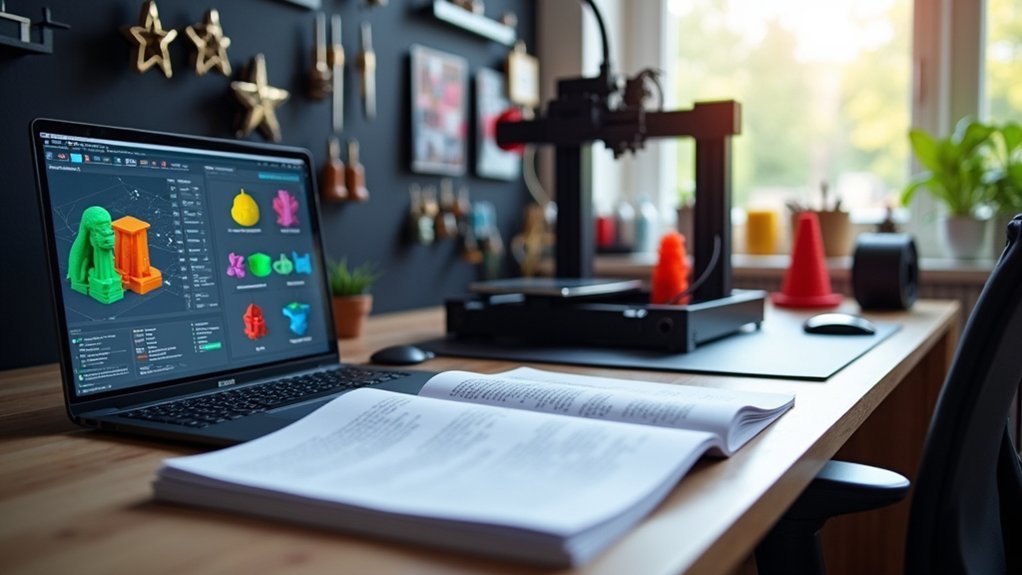
For printers using MMU systems, you’ll need additional adjustments:
- Access your End-GCODE settings in the custom profile
- Locate the parking position parameter within the code
- Replace “Y210” with “Y205” to prevent GCODE limit warnings
- Test the modified settings before finalizing your profile
Properly configuring these firmware settings guarantees smooth operation and prevents compatibility issues during printing.
These adjustments maintain seamless integration between your slicer profiles and Jobox.app while avoiding common BGCODE-related errors.
Customizing Start and End GCODE Sequences
Once you’ve configured your firmware settings, customizing your Start and End GCODE sequences becomes the next vital step in creating a robust slicer profile.
Your Start GCODE defines essential printer behaviors before printing begins, including axis homing, nozzle heating, and bed temperature settings. You’ll access these sequences through your slicer’s printer settings menu, where you can tailor commands to match your specific workflow requirements.
Your End GCODE guarantees clean printer shutdown by retracting filament, disabling heaters, and positioning the print head away from completed prints.
Include all necessary commands to prevent operational issues like collisions or incomplete heating cycles. Understanding your printer’s firmware syntax—typically Marlin—is essential for effective customization, especially when using third-party slicing software that requires manual GCODE configuration.
Frequently Asked Questions
Can You Create a Custom Slicer in Excel?
You can’t create an actual slicer program in Excel, but you can organize and calculate printer settings like temperatures, speeds, and layer heights, then manually transfer those values to your real slicer software.
How to Create a New Filament Profile in Orca Slicer?
Navigate to the “Filament” section in Orca Slicer and select “add new filament profile.” Customize temperature, flow rate, and advanced settings like retraction distance. Save your profile with a descriptive name for future use.
How to Create a Filament Profile?
You’ll navigate to your slicer’s filament settings and select “create new profile.” Input essential parameters like diameter, material type, printing temperature, and bed temperature, then save your custom profile for future use.
How Do I Import Profiles to Orca Slicer?
Navigate to Orca Slicer’s “Profiles” section and select “Import” from the dropdown menu. Use the file browser to locate your JSON or compatible profile file, then select it to add it to your profiles list.

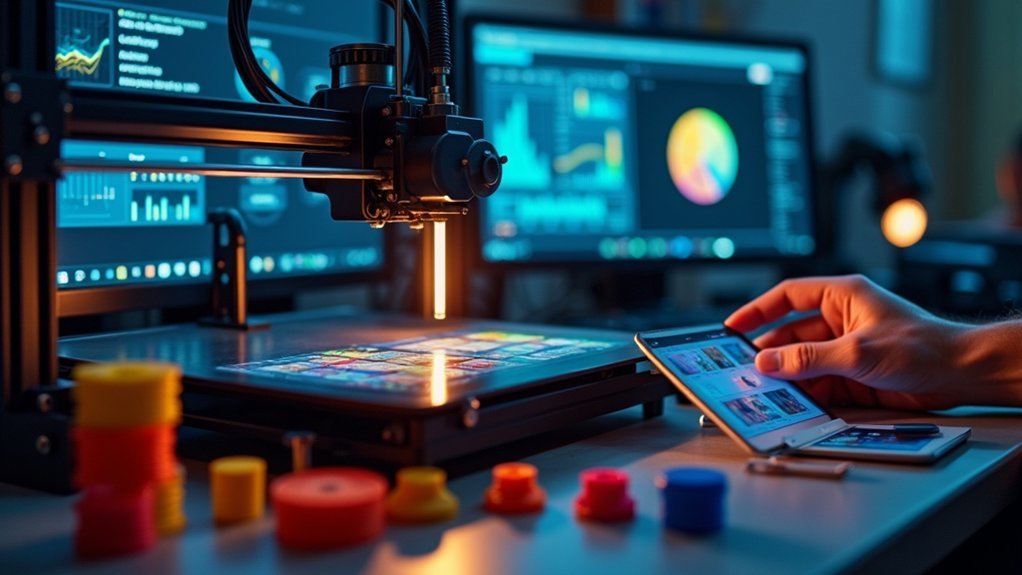
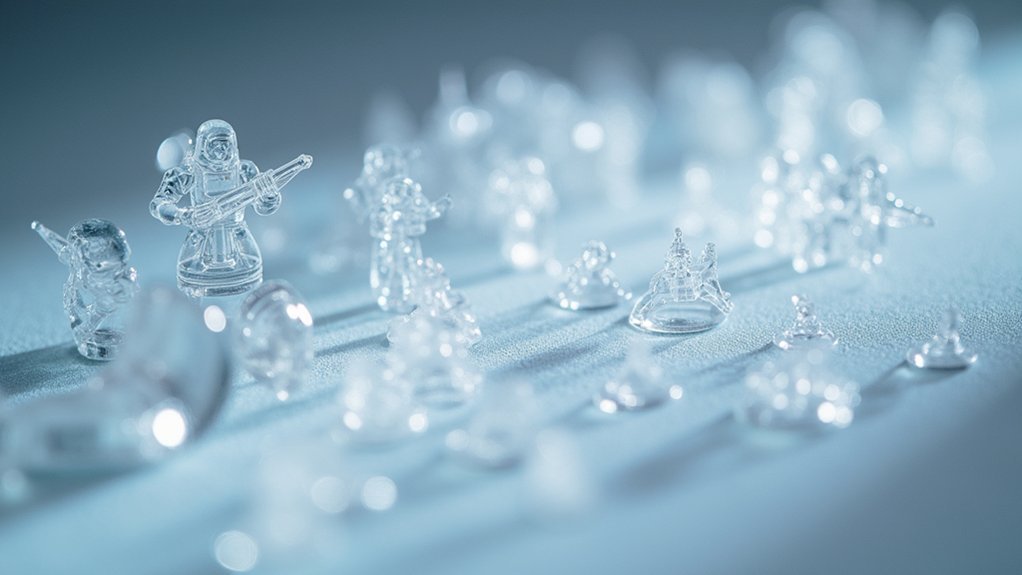
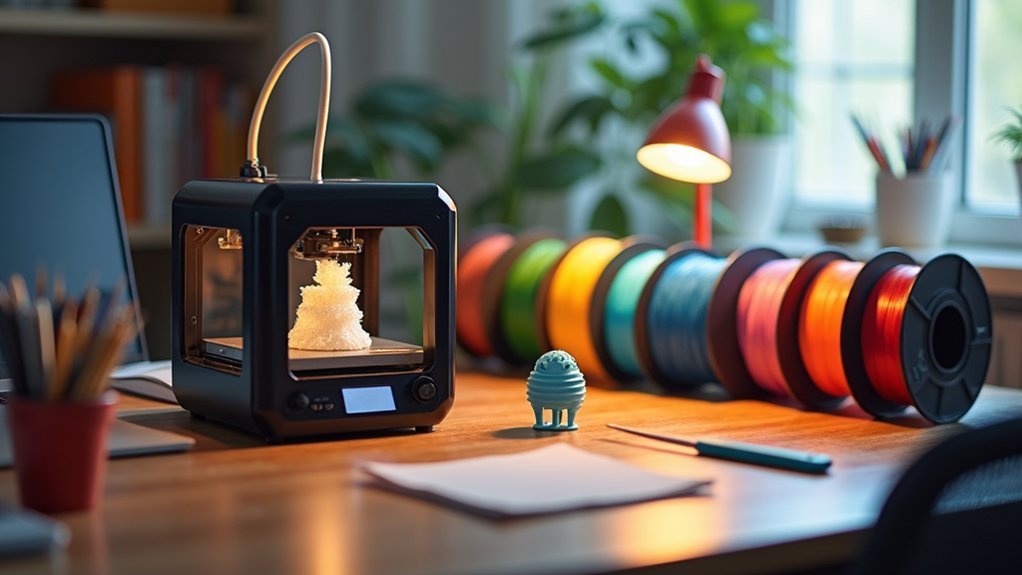
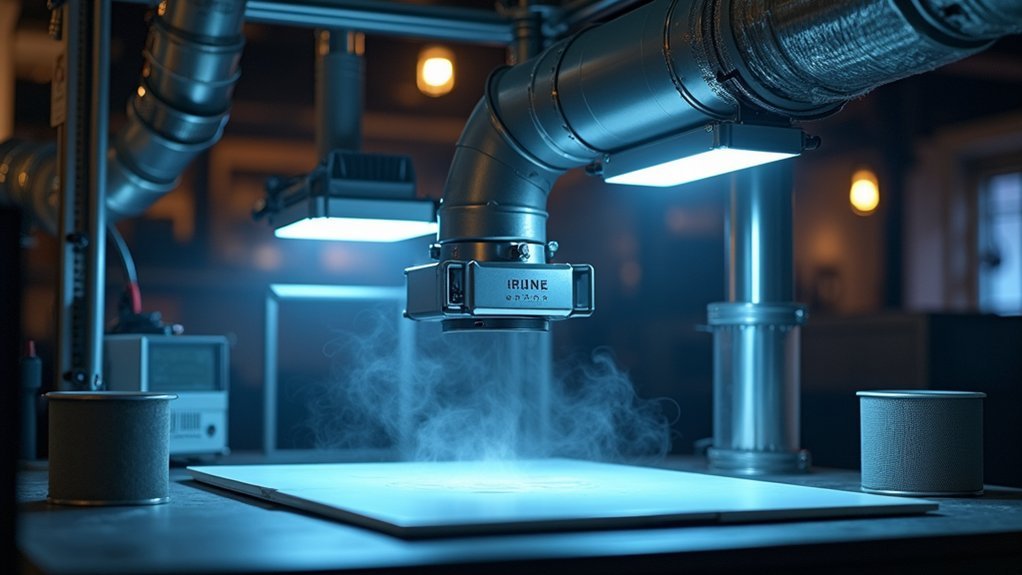
Leave a Reply